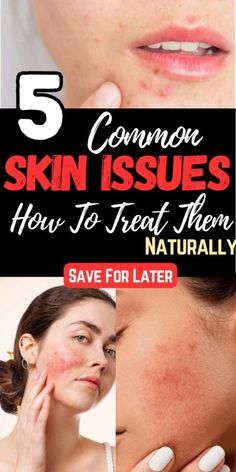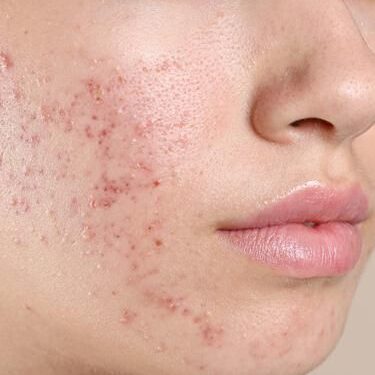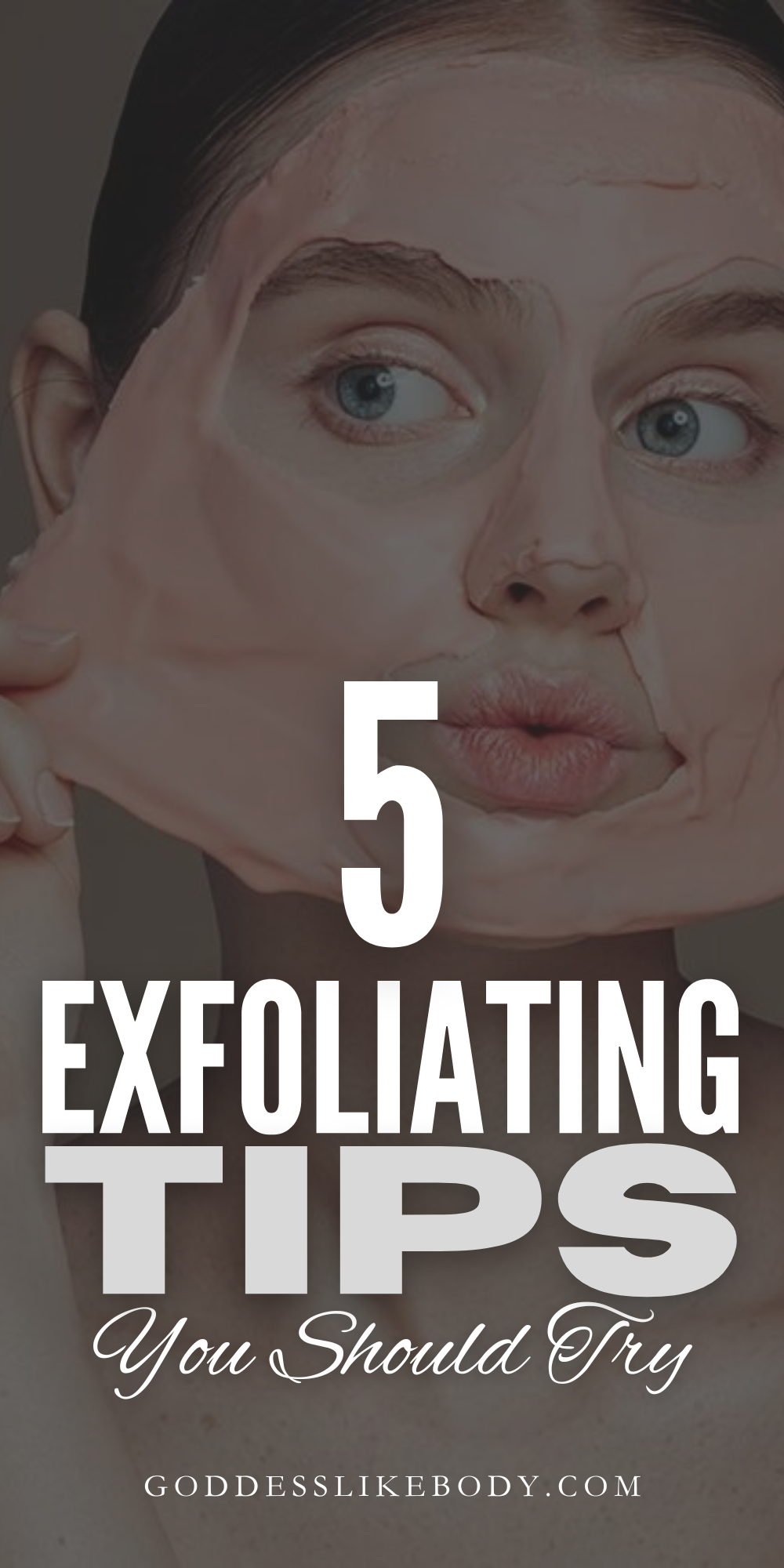Skin problems are a common occurrence that affects many individuals. From acne to eczema, these issues can have a significant impact on one’s self-esteem and overall well-being.
In this article, we will explore some of the most common skin issues people face and provide insights on how to manage and treat them efficiently.
Busy? Save this pin for later.
Common Skin Issues: What are the Most Common Skin Issues that People Experience?
Many people experience common skin issues at some point in their lives. These issues can range from mild to severe and they can affect people of all ages. Some of the most common skin issues include:
Acne:
Acne is a common skin condition that usually occurs when hair follicles become clogged with oil and dead skin cells. It can manifest as whiteheads, blackheads, pimples, or cysts.
Acne is most commonly seen during puberty due to hormonal changes, but it can also affect adults. Treatment options for acne include topical creams, oral medications, and lifestyle changes such as maintaining a healthy diet and keeping the skin clean.
Eczema:
Eczema, also known as atopic dermatitis, is a chronic condition characterized by dry, itchy, and inflamed skin. It usually appears in patches on the face, hands, elbows, and knees.
Eczema is thought to be caused by a combination of genetic and environmental factors. Treatment usually involves moisturizing the skin regularly with fragrance-free creams or ointments and avoiding triggers such as certain fabrics or irritants.
Psoriasis:
Psoriasis is an autoimmune disease that causes red, scaly patches on the skin. It occurs when the immune system mistakenly attacks healthy cells in the body.
Psoriasis can be triggered by stress, infections, or certain medications. Treatment option includes topical creams containing corticosteroids or vitamin D analogs, phototherapy (light therapy), oral medications, or biologic drugs.
You Might Also Like: 8 Skincare Secrets for Youthful and Ageless Beauty
Understanding Acne: How Does Acne Develop and What are Some Effective Treatments?
Acne develops when hair follicles become clogged with oil and dead skin cells. This can occur due to hormonal changes, such as during puberty or hormonal imbalances in adults.
The excess oil production and buildup of dead skin cells create an ideal environment for the growth of bacteria, leading to inflammation and the formation of acne lesions.
Treatment options for acne:
- Topical creams or gels containing ingredients such as benzoyl peroxide, salicylic acid, or retinoids can help unclog pores and reduce inflammation.
- Oral medications, like antibiotics or hormonal contraceptives, may be prescribed by a dermatologist for more severe cases of acne.
- Lifestyle changes can also play a good role in managing acne. Keeping the skin very clean by washing twice daily with a gentle cleanser and avoiding harsh scrubbing can you help prevent further irritation. Additionally, avoiding triggers like certain foods (e.g., high glycemic index foods) or stress can also be beneficial.
It’s important to note that what works for one person may not work for another, so it’s best to consult with a dermatologist to better determine the most effective treatment plan for individual cases of acne.
Natural Remedies for Eczema:
Eczema is a chronic skin condition characterized by red, itchy, and inflamed patches on the skin. While there is no cure for eczema, there are several natural remedies that can help manage symptoms and improve the overall health of the skin.
1. Moisturize Regularly
One of the most important steps in managing eczema is moisturizing the skin. Opt for thick, fragrance-free moisturizers that lock in moisture and create a protective barrier on the skin. Apply moisturizer immediately after bathing to seal in moisture.
2. Use Natural Oils
Certain natural oils have been found to be beneficial for eczema-prone skin. Examples include coconut oil, jojoba oil, and almond oil. These oils possess anti-inflammatory properties and can help soothe irritated skin. Gently massage a few drops of your chosen oil onto affected areas regularly.
3. Try Oatmeal Baths
Oatmeal baths can provide relief from itching and inflammation associated with eczema. Grind colloidal oatmeal into a fine powder and add it to warm bathwater. Soak in this mixture for 15-20 minutes to soothe irritated skin.
Natural Remedies for Psoriasis:
Psoriasis is an autoimmune disease that causes rapid growth of cells on the surface of the skin, resulting in thick, scaly patches. While there is no cure for psoriasis, certain natural remedies can help alleviate symptoms and promote healing.
1. Aloe Vera Gel
Aloe vera gel has soothing properties that can help reduce redness, itching, and inflammation associated with psoriasis. Apply a thin layer of pure aloe vera gel onto affected areas and leave it on for at least 15 minutes before rinsing off.
2. Fish Oil Supplements
Fish oil supplements containing omega-3 fatty acids have been shown to have anti-inflammatory effects, which can benefit individuals with psoriasis. Consult with a healthcare professional to determine the appropriate dosage and type of fish oil supplement for your condition.
3. Dead Sea Salt Baths
Soaking in a bath containing Dead Sea salt can help remove scales and reduce itching in psoriasis. The minerals present in the salt can also promote healing and improve overall skin health. Dissolve Dead Sea salt in warm bathwater and soak for 15-20 minutes.
You Might Also Like: How to Naturally Reduce Wrinkles: 7 Effective Methods
Rosacea
Causes of Rosacea
Rosacea is a chronic skin condition characterized by redness, flushing, and visible blood vessels on the face. While the exact cause of rosacea is still unknown, there are several factors that may contribute to its development.
One possible cause is abnormalities in the blood vessels of the face, which can lead to persistent redness and flushing. Another factor is an overactive immune system response, where the body’s immune system mistakenly attacks healthy skin cells.
Additionally, genetic predisposition and environmental triggers such as sunlight, heat, spicy foods, alcohol, and certain skincare products can also play a role in triggering or worsening rosacea symptoms.
Symptoms of Rosacea
The symptoms of rosacea can vary from person to person but typically include persistent facial redness, flushing or blushing easily, visible blood vessels (telangiectasia), and small red bumps or pustules resembling acne. Some individuals with rosacea may also experience a burning or stinging sensation on their skin.
In more severe cases, thickening of the skin and enlargement of the nose may occur, a condition known as rhinophyma. It’s important to note that rosacea primarily affects the central part of the face, including the cheeks, nose, forehead, and chin.
Treatment Options for Rosacea
While there is no cure for rosacea, there are various treatment options available to help manage its symptoms effectively. The choice of treatment depends on the severity and specific symptoms experienced by each individual.
Topical medications such as metronidazole or azelaic acid creams are commonly prescribed to reduce inflammation and redness. Oral antibiotics like doxycycline or isotretinoin may be recommended for more severe cases to control inflammation and prevent flare-ups.
Laser therapy can be used to target visible blood vessels and reduce redness. Additionally, lifestyle modifications like avoiding triggers, using gentle skincare products, and protecting the skin from sun exposure can help minimize symptoms and prevent the worsening of the condition.
It’s essential for individuals with rosacea to work closely with a dermatologist to develop a personalized treatment plan that suits their specific needs.
Wear Protective Clothing
One of the most effective ways to prevent sunburn and protect your skin from harmful UV damage is by wearing protective clothing. Opt for clothing that covers as much skin as possible, such as long-sleeved shirts, long pants, and wide-brimmed hats.
Look for clothing made from tightly woven fabrics with a high UPF (Ultraviolet Protection Factor) rating, which indicates how well the fabric blocks UV radiation.
Tips:
- Choose light-colored clothing to reflect more sunlight.
- Consider wearing UV-protective sunglasses to shield your eyes from harmful rays.
Apply Sunscreen Properly
Sunscreen is an essential part of any sunburn prevention routine. Apply a broad-spectrum sunscreen with an SPF (Sun Protection Factor) of 30 or higher generously to all exposed skin at least 15 minutes before going outside.
Reapply every two hours or more frequently if you are swimming or sweating heavily. Don’t forget to cover often overlooked areas like the ears, back of the neck, and tops of your feet.
Tips:
- Look for water-resistant sunscreens if you’ll be swimming or participating in water activities.
- Check the expiration date on your sunscreen and discard any expired products.
Seek Shade During Peak Hours
To minimize your exposure to intense sunlight and reduce the risk of sunburn, it’s advisable to seek shade during peak hours when the sun’s rays are strongest. This typically occurs between 10 am and 4 pm.
If you must be outside during these hours, try to find shaded areas such as under trees, umbrellas, or canopies. Keep in mind that shade alone is not enough to provide complete protection, so it’s still important to follow other sunburn prevention measures.
Tips:
- Use a beach umbrella or create your own shade using a large hat and lightweight, breathable fabrics.
- Remember that UV rays can still reach you in the shade, especially if there are reflective surfaces like water or sand nearby.
You Might Also Like: Debunking Common Skin Care Myths With Facts
Understanding Moles
A mole is a common skin growth that can appear anywhere on the body. They are usually brown or black in color and can vary in size and shape. Moles are generally harmless and are often present from birth or develop during childhood or adolescence. Most moles remain stable throughout a person’s life, but some may change in size, color, or texture over time.
Types of Moles
There are different types of moles that people may have:
- Congenital Moles: These moles are present at birth and occur due to an overgrowth of pigment cells.
- Acquired Moles: These moles develop after birth and can be caused by sun exposure or genetic factors.
- Atypical Moles: Also known as dysplastic nevi, these moles have irregular borders, and uneven coloration, and may be larger than normal moles. They have a slightly higher risk of developing melanoma, a type of skin cancer.
Differentiating Between Moles and Dangerous Skin Growths
While most moles are harmless, it is important to be able to differentiate them from potentially dangerous skin growths. Here are some key factors to consider:
- Symmetry: Most moles are symmetrical, meaning if you were to draw a line through the middle, both halves would match. Dangerous skin growths may be asymmetrical in shape.
- Border: Benign moles usually have smooth, well-defined borders. Suspicious growths may have irregular or blurred borders.
- Color: Moles are typically a single color, usually brown or black. Melanoma or other dangerous growths may have multiple colors within the same lesion, including shades of red, white, blue, or black.
- Size: Most moles are smaller than 6 millimeters in diameter (about the size of a pencil eraser). If a mole is larger than that or has been growing rapidly, it should be examined by a dermatologist.
If you notice any changes in your moles such as itching, bleeding, or significant changes in size, shape, or color, it is important to consult a healthcare professional for further evaluation and guidance.
Harsh Cleansers
Sensitive skin is easily irritated and can become red, dry, or itchy when exposed to harsh cleansers. Therefore, it is important to avoid skincare products that contain ingredients known to be harsh on the skin.
These include sulfates such as sodium lauryl sulfate (SLS) and sodium laureth sulfate (SLES), which are commonly found in foaming cleansers and body washes.
Instead, opt for gentle cleansers that are specifically formulated for sensitive skin, such as those labeled as “mild” or “gentle”. Look for ingredients like aloe vera or chamomile, which have soothing properties.
Recommended Products:
- Cetaphil Gentle Skin Cleanser
- La Roche-Posay Toleriane Hydrating Gentle Cleanser
- Aveeno Ultra-Calming Foaming Cleanser
Fragrances and Essential Oils
Fragrances and essential oils can be highly irritating to sensitive skin. They are often added to skincare products to provide a pleasant scent, but they can cause allergic reactions or inflammation in individuals with sensitive skin.
To avoid potential irritation, choose fragrance-free or unscented products. Look for labels that specifically state “fragrance-free” rather than “unscented”, as some products may still contain masking fragrances that can irritate the skin.
Recommended Products:
- CeraVe Moisturizing Cream (Fragrance-Free)
- Neutrogena Oil-Free Moisture (Fragrance-Free)
- Eucerin Original Healing Cream (Fragrance-Free)
Alcohol-Based Products
Alcohol is a common ingredient in many skincare products due to its ability to act as a preservative and provide a quick-drying effect. However, alcohol can be extremely drying and irritating to sensitive skin.
It can strip away the skin’s natural oils, leading to dryness, redness, and even flaking. Avoid skincare products that contain high concentrations of alcohol, such as toners or astringents. Instead, opt for alcohol-free alternatives that are formulated to be gentle on sensitive skin.
Recommended Products:
- Thayers Alcohol-Free Witch Hazel Toner
- Cosrx Advanced Snail 96 Mucin Power Essence (Alcohol-Free)
- Avene Thermal Spring Water Spray (Alcohol-Free)
You Might Also Like: The Ultimate Guide to Skin Cleansing: What You Need to Know
Moisturize Regularly
In harsh weather conditions, it is crucial to moisturize your skin regularly to combat dryness and flakiness. Opt for a rich, emollient moisturizer that is specifically formulated for dry skin. Look for ingredients like hyaluronic acid, glycerin, and shea butter, as they help to hydrate and lock in moisture.
Additionally, consider using a humidifier in your home or office to add moisture to the air. This can help prevent your skin from drying out further due to the dry indoor environment caused by heating systems.
Tips:
- Apply moisturizer immediately after showering or washing your face while the skin is still damp. This helps seal in moisture.
- Choose a moisturizer with SPF to protect your skin from harmful UV rays, even during winter months.
- Avoid using hot water when cleansing your face or taking showers as it can strip away natural oils from the skin.
Gentle Exfoliation
Exfoliating regularly can help remove dead skin cells and promote cell turnover, revealing smoother and healthier-looking skin. However, it is important to choose gentle exfoliators that won’t further irritate or dry out your skin.
Opt for chemical exfoliants containing alpha-hydroxy acids (AHAs) or beta-hydroxy acids (BHAs), as they are milder and less abrasive compared to physical scrubs.
These ingredients work by dissolving the bonds between dead skin cells, allowing them to be easily sloughed off without causing irritation.
Tips:
- Limit exfoliation to once or twice a week to avoid over-exfoliating and damaging your skin’s barrier.
- Always follow exfoliation with a hydrating moisturizer to replenish lost moisture.
- Avoid exfoliating if your skin is already irritated or inflamed, as it can further worsen the condition.
Protect Your Skin from Harsh Elements
In harsh weather conditions, it is essential to protect your skin from external elements that can exacerbate dryness and flakiness. Wear appropriate clothing like scarves, hats, and gloves to shield your skin from cold winds and low temperatures.
These accessories act as barriers, preventing moisture loss and maintaining a more favorable environment for your skin.
Additionally, don’t forget to apply a broad-spectrum sunscreen with at least SPF 30 before heading outdoors. Even though it may not be sunny, harmful UV rays can still penetrate through clouds and cause damage to your skin.
Tips:
- Choose clothing made of natural fibers like cotton or silk as they are less likely to irritate the skin compared to synthetic materials.
- Apply lip balm with SPF to protect your lips from becoming dry and chapped in cold weather.
- If possible, use a physical sunscreen containing ingredients like zinc oxide or titanium dioxide for better protection against both UVA and UVB rays.
Sun Exposure
One of the main causes of dark spots on the skin is excessive sun exposure. When your skin is exposed to the sun’s harmful ultraviolet (UV) rays, it triggers an increase in melanin production.
Melanin is responsible for giving color to our skin, hair, and eyes. However, overexposure to UV rays can lead to an uneven distribution of melanin, resulting in dark spots or hyperpigmentation. This is commonly known as sunspots or age spots.
To protect your skin from sun damage and prevent dark spots, it is essential to use sunscreen with a high SPF regularly. Wearing protective clothing such as hats and long sleeves can also help shield your skin from the sun’s harmful rays.
Hormonal Changes
Hormonal changes can also contribute to the development of dark spots on the skin. Pregnant women often experience a condition called melasma or “mask of pregnancy,” which causes patches of hyperpigmentation on their faces.
Hormonal fluctuations during pregnancy stimulate excess melanin production, leading to these dark patches.
In addition to pregnancy, hormonal changes due to menopause or certain medications can also trigger hyperpigmentation. It is important to consult a dermatologist if you notice any sudden changes in your skin pigmentation related to hormonal factors.
Acne and Post-Inflammatory Hyperpigmentation
Acne breakouts can leave behind stubborn dark spots known as post-inflammatory hyperpigmentation (PIH). When acne lesions heal, they can stimulate excess melanin production in the affected area, resulting in discoloration that ranges from red or pink to brown or black. People with darker skin tones are more prone to developing PIH.
To prevent acne-related dark spots, it is crucial not to pick or squeeze your pimples, as this can worsen inflammation and increase the risk of PIH. Proper acne treatment and skincare routines can also help minimize the occurrence of post-inflammatory hyperpigmentation.
Medications and Chemicals
Certain medications, such as nonsteroidal anti-inflammatory drugs (NSAIDs), antibiotics, antimalarial drugs, and chemotherapy agents, can cause dark spots or skin discoloration as a side effect. These medications may interfere with melanin production or affect the skin’s pigmentation process.
In addition to medications, exposure to certain chemicals like hydroquinone or harsh skincare products can also lead to dark spots on the skin. It is important to read product labels carefully and consult a healthcare professional if you experience any adverse effects from medication or chemical exposure.
Genetic Factors
Genetic factors can play a role in determining an individual’s susceptibility to developing dark spots on the skin. Some people may have a genetic predisposition for increased melanin production or uneven distribution, making them more prone to hyperpigmentation.
If you have a family history of dark spots or hyperpigmentation issues, it is advisable to take extra precautions in protecting your skin from sun damage and maintaining a healthy skincare routine.
You Might Also Like: 12 Beauty Hacks: Every Woman Should Know to Glow Up Naturally
The Importance of a Consistent Skincare Routine
A consistent skincare routine is essential for maintaining healthy and youthful-looking skin. By following a daily regimen that includes cleansing, exfoliating, moisturizing, and protecting the skin from harmful UV rays, you can significantly improve the appearance of wrinkles and fine lines.
It is important to note that while skincare routines can help reduce the signs of aging, they may not completely reverse them.
Cleansing
The first step in any skincare routine is cleansing. This helps remove dirt, oil, and impurities from the skin’s surface, preventing clogged pores and breakouts. Choose a gentle cleanser that suits your skin type and use it twice daily – once in the morning and once before bed.
Exfoliating
Exfoliation is an important step in reversing signs of aging as it helps remove dead skin cells and promotes cell turnover. Regular exfoliation can improve skin texture and reduce the appearance of fine lines and wrinkles. Use a gentle exfoliator 2-3 times a week to avoid over-exfoliating or irritating the skin.
Moisturizing
Hydrated skin is less prone to developing wrinkles and fine lines. Applying a moisturizer after cleansing helps lock in moisture, keeping the skin plump and supple. Look for moisturizers with ingredients like hyaluronic acid or ceramides that provide deep hydration to the skin.
Tips for an Effective Skincare Routine:
- Choose skincare products based on your specific skin concerns (e.g., anti-aging creams for wrinkles).
- Always wear sunscreen with at least SPF 30 to protect your skin from sun damage.
- Include antioxidants in your skincare routine to combat free radicals that contribute to aging.
- Be gentle when applying skincare products and avoid tugging or pulling on the skin.
- Consider incorporating serums or treatments with ingredients like retinol or vitamin C for added anti-aging benefits.
While skincare routines can improve the appearance of wrinkles and fine lines, it is important to have realistic expectations. Complete reversal of signs of aging may require additional interventions such as cosmetic procedures or professional treatments.
However, a consistent and tailored skincare routine can certainly help minimize the visible effects of aging and promote healthier-looking skin.
Common Triggers for Contact Dermatitis
Contact dermatitis is a skin condition that occurs when the skin comes into contact with an irritant or allergen. There are several common triggers for contact dermatitis that individuals should be aware of.
One such trigger is exposure to certain chemicals and substances, such as fragrances, preservatives, and metals like nickel. These substances can cause an allergic reaction in susceptible individuals, leading to symptoms like redness, itching, and rash.
Other triggers include prolonged exposure to water or moisture, which can strip the skin of its natural oils and disrupt its protective barrier function. Additionally, certain plants like poison ivy or poison oak contain oils that can cause contact dermatitis in some people.
Allergenic Substances
Allergenic substances are a major trigger for contact dermatitis. These include common allergens like fragrances found in perfumes, lotions, and cleaning products; preservatives like formaldehyde or parabens; and metals such as nickel commonly found in jewelry or clothing fasteners.
Individuals who have known allergies to these substances should take extra precautions to avoid direct contact with them. This may involve reading product labels carefully and opting for fragrance-free or hypoallergenic alternatives.
Prevention Tips:
– Wear gloves: When handling chemicals or substances known to trigger contact dermatitis, wearing protective gloves can help create a barrier between the skin and the irritant.
– Avoid known allergens: If you know you have allergies to specific substances, make a conscious effort to avoid them by checking ingredient lists on products before use.
– Moisturize regularly: Keeping the skin well-moisturized can help strengthen its natural barrier function and reduce the risk of developing contact dermatitis.
– Practice good hand hygiene: Washing hands with mild soap and lukewarm water after coming into contact with potential irritants can help remove any residue and minimize the risk of a reaction.
Treatment Options for Contact Dermatitis
When contact dermatitis occurs, there are several treatment options available to alleviate symptoms and promote healing. Mild cases of contact dermatitis can often be managed at home with over-the-counter remedies.
These may include topical corticosteroid creams or ointments to reduce inflammation and itching, as well as antihistamines to relieve allergic reactions. It’s important to follow the instructions provided by healthcare professionals or product labels when using these treatments.
Medical Interventions
For more severe or persistent cases of contact dermatitis, medical interventions may be necessary. This could involve prescription-strength corticosteroids, oral medications to control itching and inflammation, or even phototherapy (light therapy) in certain cases.
In some instances, if an infection develops due to scratching or open sores, antibiotics may be prescribed.
Self-Care Measures:
– Avoid scratching: Scratching can further irritate the skin and worsen symptoms. Try using cold compresses or applying a soothing lotion instead.
– Cool baths: Taking cool baths with colloidal oatmeal or baking soda can help soothe inflamed skin.
– Identify triggers: Keep track of potential triggers that cause flare-ups and try to avoid them in the future.
– Use gentle skincare products: Opt for mild cleansers and moisturizers specifically formulated for sensitive skin.
By understanding the common triggers for contact dermatitis and being aware of effective treatment options, individuals can take proactive steps to prevent flare-ups and manage their condition effectively.
It is always recommended to consult with a healthcare professional for personalized advice and guidance regarding specific triggers and treatment plans.
Diet and Overall Skin Health Connection: Understanding the Connection between Diet and Overall Skin Health, Including Foods that Promote Healthy Skin
The Impact of Diet on Skin Health
Proper nutrition plays a significant role in maintaining healthy skin. The food we consume directly affects the health and appearance of our skin. A diet lacking in essential nutrients can contribute to various skin problems such as acne, dryness, and premature aging.
On the other hand, consuming a well-balanced diet rich in specific nutrients can promote vibrant, youthful-looking skin.
Vitamins for Healthy Skin
Certain vitamins are crucial for maintaining healthy skin. Vitamin C, found abundantly in citrus fruits and leafy greens, helps in collagen production and protects against sun damage. Vitamin E, present in nuts and seeds, acts as an antioxidant that protects the skin from free radicals.
Another important vitamin is vitamin A, which is found in carrots and sweet potatoes. It aids in cell turnover and keeps the skin smooth.
Omega-3 Fatty Acids for Nourished Skin
Including omega-3 fatty acids in your diet can have numerous benefits for your skin’s health. These healthy fats help maintain moisture levels within the skin, reducing dryness and promoting a supple complexion. Foods rich in omega-3 fatty acids include fatty fish like salmon or mackerel, flaxseeds, chia seeds, and walnuts.
Avoiding Trigger Foods
In addition to incorporating beneficial foods into your diet, it is equally important to avoid certain trigger foods that may exacerbate common skin issues such as acne or inflammation.
For some individuals, dairy products or high-glycemic foods like sugary snacks can worsen acne symptoms. Identifying these trigger foods through trial and error can help improve overall skin health.
Foods that Promote Healthy Skin
Including specific foods in your diet can greatly contribute to promoting healthy skin and a youthful appearance.
Colorful Fruits and Vegetables
Consuming a variety of colorful fruits and vegetables provides the body with essential vitamins, minerals, and antioxidants. Berries such as blueberries, strawberries, and raspberries are rich in antioxidants that protect the skin from damage caused by free radicals.
Leafy greens like spinach and kale contain high levels of vitamin C, which aids collagen production.
Hydrating Foods for Moisturized Skin
Staying hydrated is crucial for maintaining healthy skin. Alongside drinking enough water, incorporating hydrating foods into your diet can support optimal skin moisture levels. Water-rich fruits like watermelon, cucumbers, and oranges provide hydration while delivering essential vitamins and minerals.
Healthy Fats for Skin Elasticity
Including sources of healthy fats in your diet can improve skin elasticity and help maintain a youthful appearance. Avocados are an excellent source of monounsaturated fats that nourish the skin from within.
Consuming olive oil or incorporating nuts and seeds into your meals can provide beneficial fats for overall skin health. By understanding the connection between diet and overall skin health, individuals can make informed choices about their nutrition to support vibrant, glowing skin.
Incorporating nutrient-rich foods while avoiding trigger foods can significantly contribute to achieving healthier skin.
You Might Also Like: 10 Beauty Routine Tips for a Flawless Skin
Symptoms of Fungal Infections
Fungal infections on the skin, such as athlete’s foot, usually present with specific symptoms that can help differentiate them from bacterial infections like impetigo. Common symptoms of fungal infections include:
- Itching and burning sensation
- Redness and inflammation
- Peeling or cracking skin
- Blisters or oozing sores
- Foul odor
Athlete’s Foot: A Common Fungal Infection
Athlete’s foot is a type of fungal infection that commonly affects the feet. It is caused by various types of fungi, including Trichophyton and Epidermophyton. The condition often starts between the toes and can spread to other areas if left untreated. People who frequently wear tight-fitting shoes or damp socks are more prone to developing athlete’s foot.
Treatment Options for Athlete’s Foot
The treatment for athlete’s foot typically involves antifungal medications, which can be obtained over-the-counter or prescribed by a healthcare professional. These medications may come in the form of creams, sprays, powders, or oral tablets.
Practicing good foot hygiene, keeping the affected area clean and dry, wearing breathable footwear, and avoiding walking barefoot in public places can help prevent and manage athlete’s foot.
Symptoms of Bacterial Infections
Bacterial infections on the skin, such as impetigo, have distinct symptoms that differ from fungal infections. Some common symptoms of bacterial skin infections include:
- Painful red sores or blisters filled with pus
- Honey-colored crusts or scabs
- Swelling and tenderness
- Itching or rash around the affected area
Impetigo: A Contagious Bacterial Infection
Impetigo is a highly contagious bacterial infection that primarily affects children, although it can occur in people of all ages. It is usually caused by Staphylococcus aureus bacteria, but streptococcal bacteria can also be responsible. Impetigo commonly appears as red sores on the face, especially around the nose and mouth, but it can occur on other parts of the body as well.
Treatment Options for Impetigo
The treatment for impetigo often involves topical antibiotics in the form of ointments or creams. In more severe cases, oral antibiotics may be prescribed. It is important to keep the affected areas clean and covered to prevent spreading the infection to others. Good personal hygiene practices, such as regular handwashing, can also help prevent impetigo.
Allergic Reaction:
An allergic reaction is a common cause of rashes. It occurs when the immune system overreacts to a substance that it perceives as harmful. Common allergens include certain foods, medications, insect bites or stings, and latex.
When exposed to an allergen, the body releases histamines, which can lead to symptoms such as itching, redness, and swelling of the skin. In some cases, an allergic reaction can also cause hives or welts on the skin.
Common Symptoms of Allergic Reaction:
– Itchy or red skin
– Swelling or inflammation
– Rash that may appear as raised bumps or hives
– Skin sensitivity to touch or pressure
To determine if your rash is due to an allergic reaction, try to recall any recent exposure to potential allergens. Keep in mind that allergies can develop over time, so even if you haven’t had a reaction before, it’s still possible.
If you suspect an allergy is causing your rash, consult with a healthcare professional who can perform tests such as skin prick tests or blood tests to identify specific allergens.
Hives:
Hives are another type of rash that often appears suddenly and causes itchy welts on the skin. They are usually triggered by an allergic reaction but can also be caused by other factors like stress, infections, or underlying medical conditions like autoimmune disorders. Hives typically come and go within hours but can persist for days in some cases.
Common Symptoms of Hives:
– Raised red or pink welts on the skin – Itching or burning sensation – Swelling around the affected area To determine if your rash is hives-related, consider any recent exposure to potential triggers like new medications, foods, or environmental factors.
If you suspect hives but they persist for more than a few days or are accompanied by other concerning symptoms, it’s important to seek medical advice for proper diagnosis and treatment.
Shingles:
Shingles is a viral infection caused by the varicella-zoster virus, which is the same virus that causes chickenpox. After recovering from chickenpox, the virus can remain dormant in the body and reactivate later in life as shingles. This condition typically affects one side of the body and manifests as a painful rash with fluid-filled blisters.
Common Symptoms of Shingles:
– Pain, tingling, or burning sensation in a specific area – Redness and inflammation of the skin – Rash that develops into clusters of fluid-filled blisters – Itching or sensitivity to touch To determine if your rash could be shingles, consider if you have had chickenpox in the past.
If so, there is a risk of developing shingles later in life. Shingles usually occur along a single nerve pathway on one side of the body. If you suspect shingles based on these symptoms, consult with a healthcare professional who can provide appropriate antiviral medications to alleviate symptoms and prevent complications.
Treatments
1. Cleansing:
Choosing the Right Cleanser:
When it comes to oily skin, it is essential to choose a cleanser specifically formulated for this skin type. Look for cleansers that are oil-free and non-comedogenic, as they won’t clog your pores or leave a greasy residue. Ingredients like salicylic acid or benzoyl peroxide can be beneficial in controlling excess oil production and preventing breakouts.
Cleansing Twice a Day:
To keep oily skin under control, it is recommended to cleanse your face twice a day – once in the morning and once before bed. This helps remove any dirt, impurities, and excess oil that may have accumulated throughout the day or while you sleep. Be gentle when cleansing your face and avoid scrubbing too harshly, as this can strip away natural oils and lead to the overproduction of sebum.
Tips for Effective Cleansing:
– Use lukewarm water instead of hot water to avoid drying out your skin. – Massage the cleanser onto your face using circular motions for about 30 seconds. – Rinse thoroughly with cool water to help close your pores.
2. Exfoliating:
Exfoliation is an important step in any skincare routine for oily skin as it helps remove dead skin cells and unclog pores. However, it’s crucial not to overdo it, as excessive exfoliation can irritate the skin and stimulate even more oil production.
Frequency of Exfoliation:
For oily skin types, exfoliating 2-3 times a week is generally sufficient. Opt for chemical exfoliants containing ingredients like glycolic acid or salicylic acid, as they effectively penetrate the pores and dissolve excess oil without being too abrasive on the skin.
Cautionary Measures:
– Avoid physical exfoliators with harsh particles that can cause micro-tears in the skin. – If you experience any redness or irritation, reduce the frequency of exfoliation. – Always follow up with a moisturizer to replenish the skin’s moisture barrier.
3. Moisturizing:
Contrary to popular belief, even oily skin needs hydration. Using a lightweight, oil-free moisturizer is essential to keep your skin balanced and prevent it from producing excess oil to compensate for dryness.
Choosing the Right Moisturizer:
Look for moisturizers labeled as “non-comedogenic” or “oil-free.” These formulations are designed to provide hydration without clogging pores. Ingredients like hyaluronic acid or glycerin can help attract and retain moisture in the skin without adding heaviness.
Tips for Effective Moisturization:
– Apply moisturizer while your face is still slightly damp after cleansing. – Use gentle upward strokes to massage the product into your skin.
– Don’t forget to extend your moisturizer down to your neck and décolletage.
Give your skin time to adjust and observe how it responds to each step. If necessary, consult with a dermatologist who can provide personalized recommendations based on your specific needs.
There are several common skin issues that people experience, including acne, eczema, and psoriasis. These conditions can range from mild to severe and may require different treatment approaches. It is important to consult with a dermatologist to determine the most effective treatment plan for individual cases.










Leave a Reply
You must be logged in to post a comment.